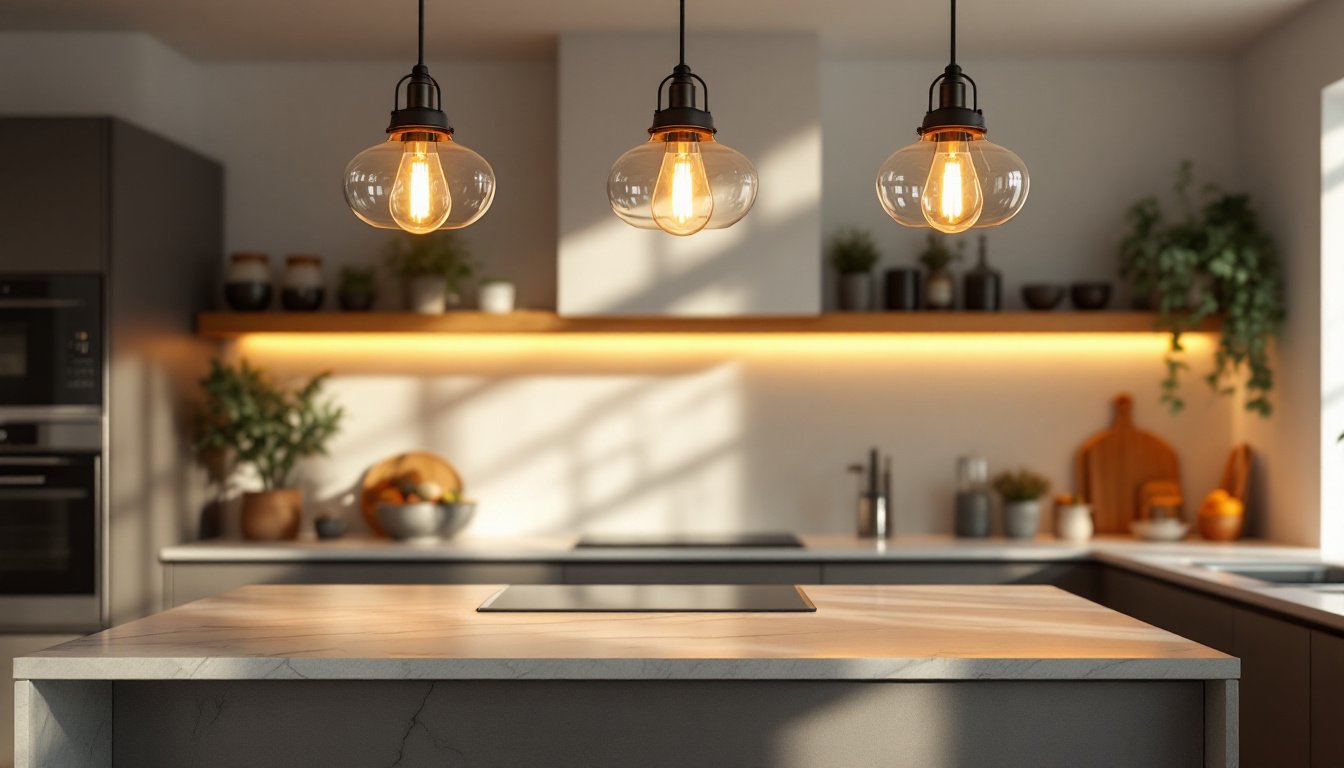
The transition from traditional lighting solutions to more energy-efficient options has become a significant trend in the lighting industry. Among these options, LED bulbs have gained popularity due to their longevity, efficiency, and versatility. However, a common question arises: Can LED bulbs be used in regular fluorescent fixtures? This article delves into this topic, providing insights and considerations for lighting contractors to keep in mind when advising clients on lighting upgrades.
Fluorescent fixtures are designed to work with specific types of light sources, primarily fluorescent tubes. These fixtures operate using a different technology compared to LED bulbs. Fluorescent lights rely on gas-filled tubes and a ballast to regulate the electrical current, while LED bulbs use semiconductor technology to produce light. This fundamental difference raises questions about compatibility.
When attempting to replace fluorescent tubes with LED bulbs, it is essential to understand the type of fluorescent fixture in use. Some fixtures are designed to accommodate LED retrofits, while others are not. The ballast type also plays a crucial role in determining whether an LED bulb can be used in a fluorescent fixture. For instance, electronic ballasts are generally more compatible with LED options than magnetic ballasts, which may require additional modifications. This compatibility consideration is vital not only for functionality but also for ensuring energy efficiency and optimal performance.
There are primarily two types of LED bulbs that can be considered for use in fluorescent fixtures: plug-and-play (Type A) and direct wire (Type B) LEDs. Plug-and-play LEDs are designed to work with existing ballasts, making them a convenient option for retrofitting. On the other hand, direct wire LEDs require the removal of the ballast and direct wiring to the fixture, which may involve more installation work. This can be a significant factor for building managers or homeowners who may not have the expertise or resources for electrical modifications.
Lighting contractors must assess the existing fixtures and ballasts before recommending a specific type of LED bulb. This ensures that the chosen solution is not only compatible but also safe and efficient. Additionally, the choice of LED bulb can impact the overall ambiance and functionality of the space. For example, some LED options offer adjustable color temperatures, allowing users to customize the lighting to suit different activities or moods. Furthermore, the longevity and energy savings associated with LED technology make it an attractive choice, as these bulbs can last significantly longer than traditional fluorescent tubes, reducing maintenance costs and waste over time.
One of the most compelling reasons to consider LED bulbs is their energy efficiency. LEDs consume significantly less power than fluorescent bulbs, leading to reduced energy bills for clients. This is particularly advantageous in commercial settings where lighting is used extensively. In fact, studies have shown that switching to LED lighting can reduce energy consumption by up to 80%, translating into substantial savings over time. For businesses operating on tight margins, these savings can make a noticeable difference in their bottom line.
In addition to lower energy consumption, LED bulbs also have a longer lifespan compared to their fluorescent counterparts. While traditional bulbs may last around 1,000 hours, LED bulbs can last anywhere from 15,000 to 50,000 hours, depending on the type and usage. This longevity means fewer replacements and maintenance costs over time. For lighting contractors, emphasizing these benefits can help clients understand the long-term value of investing in LED technology. Moreover, the reduced frequency of replacements can also minimize the environmental impact associated with manufacturing and disposing of lighting products, making LEDs a more sustainable choice.
LED bulbs offer superior light quality, providing better color rendering and brightness. This can enhance the overall ambiance of a space, making it more inviting and functional. For contractors, understanding the importance of light quality can aid in making informed recommendations to clients, particularly in settings like retail or hospitality where lighting plays a crucial role in customer experience. The ability of LEDs to produce a full spectrum of light allows for more vibrant displays, which can be especially beneficial in showcasing products or creating a warm atmosphere in dining establishments.
Furthermore, many LED bulbs are available in various color temperatures, allowing for customization based on the client’s preferences and the specific requirements of the space. From warm white tones that create a cozy environment to cool white shades that enhance focus and productivity, this flexibility can be a significant selling point when discussing lighting upgrades. Additionally, advancements in LED technology have led to the development of smart LED bulbs that can be controlled via mobile apps, enabling users to adjust brightness and color settings on demand. This level of control not only enhances user experience but also opens up new possibilities for creating dynamic lighting schemes that can adapt to different occasions or moods.
One of the primary challenges when retrofitting fluorescent fixtures with LED bulbs is ballast compatibility. Not all ballasts are designed to work with LED technology, which can lead to flickering, reduced performance, or even complete failure of the LED bulb. This issue highlights the importance of thorough assessment before making any recommendations.
Contractors must be prepared to educate clients about the potential need for ballast replacement or removal when switching to LED bulbs. This additional step can affect project timelines and budgets, making it essential to communicate these factors clearly.
Installation processes vary significantly between plug-and-play and direct wire LED bulbs. While plug-and-play options offer a straightforward solution, direct wire installations may require more extensive electrical work. Contractors should be equipped to handle both scenarios, ensuring that they can meet the diverse needs of their clients.
Moreover, safety should always be a priority during installation. Ensuring that all electrical connections are secure and compliant with local codes is crucial to avoid hazards. Lighting contractors must stay informed about best practices and regulations to provide safe and reliable installations.
As energy efficiency standards become more stringent, lighting contractors must stay updated on regulations that affect the use of LED bulbs in fluorescent fixtures. Many regions have implemented energy codes that encourage or mandate the use of energy-efficient lighting solutions. Understanding these regulations can help contractors guide clients toward compliant choices.
In addition, some utility companies offer rebates and incentives for upgrading to energy-efficient lighting. Contractors should be aware of these programs, as they can provide clients with financial benefits and encourage the adoption of LED technology.
The environmental benefits of switching to LED lighting are significant. LEDs contain no hazardous materials like mercury, which is present in fluorescent bulbs. This makes them a safer option for disposal and contributes to a more sustainable lighting solution.
Contractors can play a vital role in promoting environmentally friendly practices by educating clients about the ecological advantages of LED lighting. This not only enhances the contractor’s reputation but also aligns with the growing consumer demand for sustainable products.
Effective communication is key when discussing lighting upgrades with clients. Many clients may not fully understand the differences between LED and fluorescent lighting, nor the benefits of making the switch. Lighting contractors should be prepared to explain these concepts in clear, relatable terms.
Providing visual aids, such as comparison charts or case studies, can help clients grasp the advantages of LED technology. Demonstrating potential energy savings and improved light quality can be particularly persuasive, leading to more informed decision-making.
Clients may have concerns about the initial cost of LED bulbs compared to fluorescent options. It is essential for contractors to address these concerns by highlighting the long-term savings associated with reduced energy consumption and maintenance costs. By framing the investment in LED technology as a cost-saving measure over time, contractors can alleviate client apprehensions.
Additionally, some clients may have misconceptions about the performance of LED bulbs, such as concerns about dimming or color quality. Providing samples or demonstrations can help dispel these myths and build confidence in the proposed solutions.
The rise of smart lighting technology presents new opportunities for lighting contractors. Many LED bulbs are now compatible with smart home systems, allowing for enhanced control and customization. This trend is particularly appealing to clients looking to modernize their spaces and improve energy efficiency.
Contractors should stay informed about the latest advancements in smart lighting technology and be prepared to offer solutions that integrate seamlessly with existing systems. This knowledge can set contractors apart in a competitive market and position them as experts in the field.
As LED technology continues to evolve, new products with enhanced features and capabilities are emerging. From tunable white lighting to improved color rendering indexes, these advancements can significantly impact the way lighting contractors approach their projects.
Staying updated on these trends allows contractors to offer cutting-edge solutions to clients, ensuring that they remain competitive and relevant in the industry. This proactive approach can lead to increased client satisfaction and repeat business.
In conclusion, while LED bulbs can work in regular fluorescent fixtures, the compatibility and installation considerations must be carefully assessed. Lighting contractors play a crucial role in guiding clients through the transition to LED technology, emphasizing the numerous benefits such as energy efficiency, cost savings, and improved light quality.
By understanding the challenges associated with retrofitting fluorescent fixtures, staying informed about regulatory and environmental considerations, and effectively communicating with clients, contractors can position themselves as trusted advisors in the lighting industry. As technology continues to advance, embracing these changes will not only enhance client satisfaction but also contribute to a more sustainable future in lighting.
Ready to upgrade your lighting projects with the best LED bulbs on the market? Look no further than LumenWholesale, where we provide lighting contractors with spec-grade lighting products at unbeatable wholesale prices. Our extensive selection not only meets but exceeds industry standards, ensuring you deliver reliable and high-performance lighting solutions to your clients. With free shipping on bulk orders, you can trust that you’re getting the highest quality without hidden fees or compromises. Make the smart switch to LED with LumenWholesale and experience the perfect blend of quality, affordability, and convenience. Wholesale Lighting at the Best Value is just a click away.

Discover proven lighting dog methods for contractors to enhance safety, efficiency, and compliance.

Discover why lighting contractors should prioritize light pricing in their projects.

Discover essential insights into kitchen island lighting that every contractor should master.

Explore the advantages and drawbacks of outdoor solar light bulb replacements for lighting contractors.